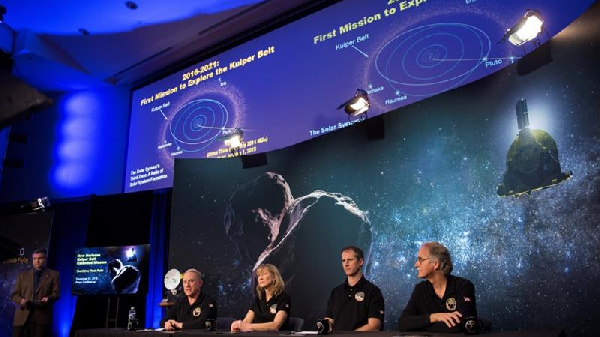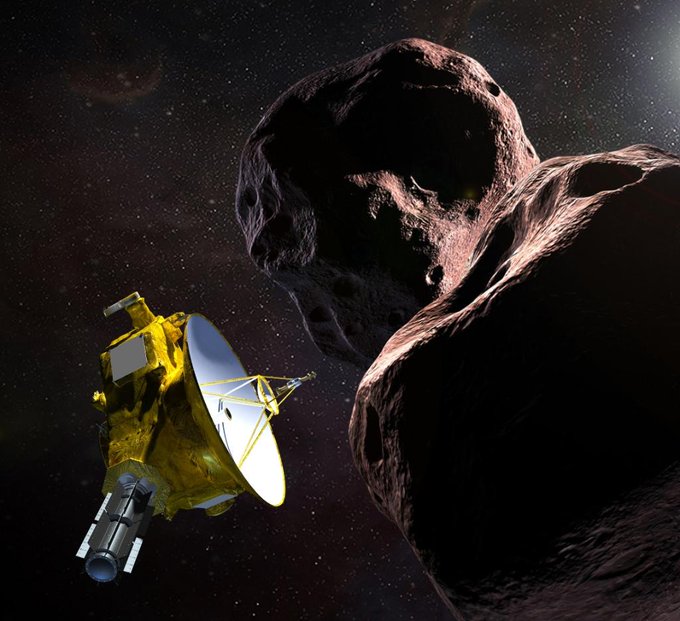GENERAL NEWS
NASA rings in new year with farthest spacecraft flyby

A NASA spacecraft has flown past the most distant world ever studied by mankind, Ultima Thule, a tiny frozen relic of the early solar system that could reveal how planets formed.
The US space agency rang in the new year on Tuesday with the landmark flyby of the cosmic body located four billion miles (6.4 billion kilometres) from the Earth.
“Go New Horizons!” said lead scientist Alan Stern as a crowd cheered at the Johns Hopkins Applied Physics Laboratory in Maryland to mark the moment at 12:33 am (05.33 GMT) when the New Horizons spacecraft aimed its cameras at the space rock.
Offering scientists the first up-close look at an ancient building block of planets, the flyby took place about a billion miles beyond Pluto, which was until now the most faraway world ever visited up close by a spacecraft.
The flyby comes three-and-a-half years after New Horizons swung past Pluto and yielded the first close-ups of the dwarf planet.
Real-time video of the actual flyby was impossible, since it takes more than six hours for a signal sent from Earth to reach the spaceship, and another six hours for the response to arrive.
The first signal back to Earth should come about 10 hours after the flyby, around 9:45 am (14:45 GMT), letting NASA know if New Horizons survived the risky, high-speed encounter.
Hurtling through space at a speed of 32,000 miles an hour, the spacecraft aimed to make its closest approach within 2,200 miles of the surface of Ultima Thule.
“This is a night none of us are going to forget,” said Queen guitarist Brian May, who also holds an advanced degree in astrophysics – and who recorded a solo track to honour the spacecraft and its spirit of exploration.
Stern said Ultima Thule is unique because it is a relic from the early days of the solar system and could provide answers about the origins of other planets.
“The object is in such a deep freeze that it is perfectly preserved from its original formation,” he said.
“Everything we are going to learn about Ultima – from its composition to its geology to how it was originally assembled, whether it has satellites and an atmosphere and those kinds of things – are going to teach us about the original formation conditions of objects in the solar system.
What does it look like?
Scientists are not sure what Ultima Thule looks like, whether it is cratered or smooth, or even if it is a single object or a cluster.
It was discovered in 2014 with the help of the Hubble Space Telescope, and is believed to be 12-20 miles in size.
A blurred and pixelated image released Monday, taken from 1.2 million miles away, has intrigued scientists because it appears to show an elongated blob, not a round space rock.
The spaceship was to collect 900 images over the course of a few seconds as it shaved by. Even clearer images should arrive over the next three days.
“Now it is just a matter of time to see the data coming down,” said deputy project scientist John Spencer of the Southwest Research Institute.
Scientists decided to study Ultima Thule with New Horizons after the spaceship, which was launched in 2006, completed its main mission of flying by Pluto in 2015, returning the most detailed images ever taken of the dwarf planet.
Stern said the goal is to take images of Ultima that are three times the resolution the team had for Pluto.
Source: aljazeera.com


